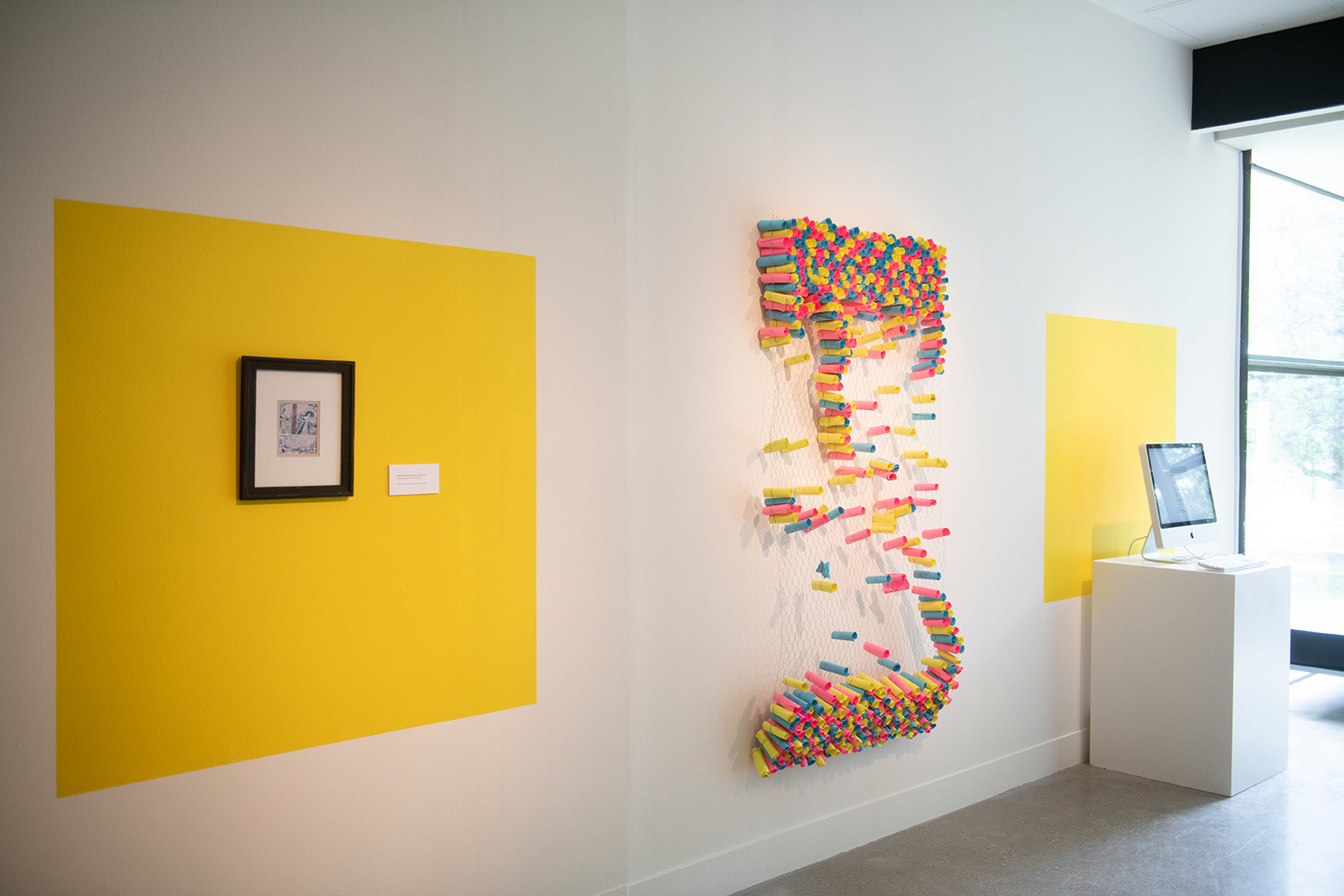
The three feedback loops
project overview
As part of my personal thesis display in Work For Progress, I created three different, affordable feedback loops that museums could easily implement. Each feedback loop encouraged different types of participation and resulted in different outcomes.
As part of my personal thesis display in Work For Progress, I created three different, affordable feedback loops that museums could easily implement. Each feedback loop encouraged different types of participation and resulted in different outcomes.
Created while at UT Austin, 2019. Some photos courtesy of Sandy Carson and Lawrence Peart
Feedback Loop #1
For this feedback loop, visitors could anonymously text a google voice number and ask questions about the art. I would answer as quickly and as honestly as I could upon receiving the text.
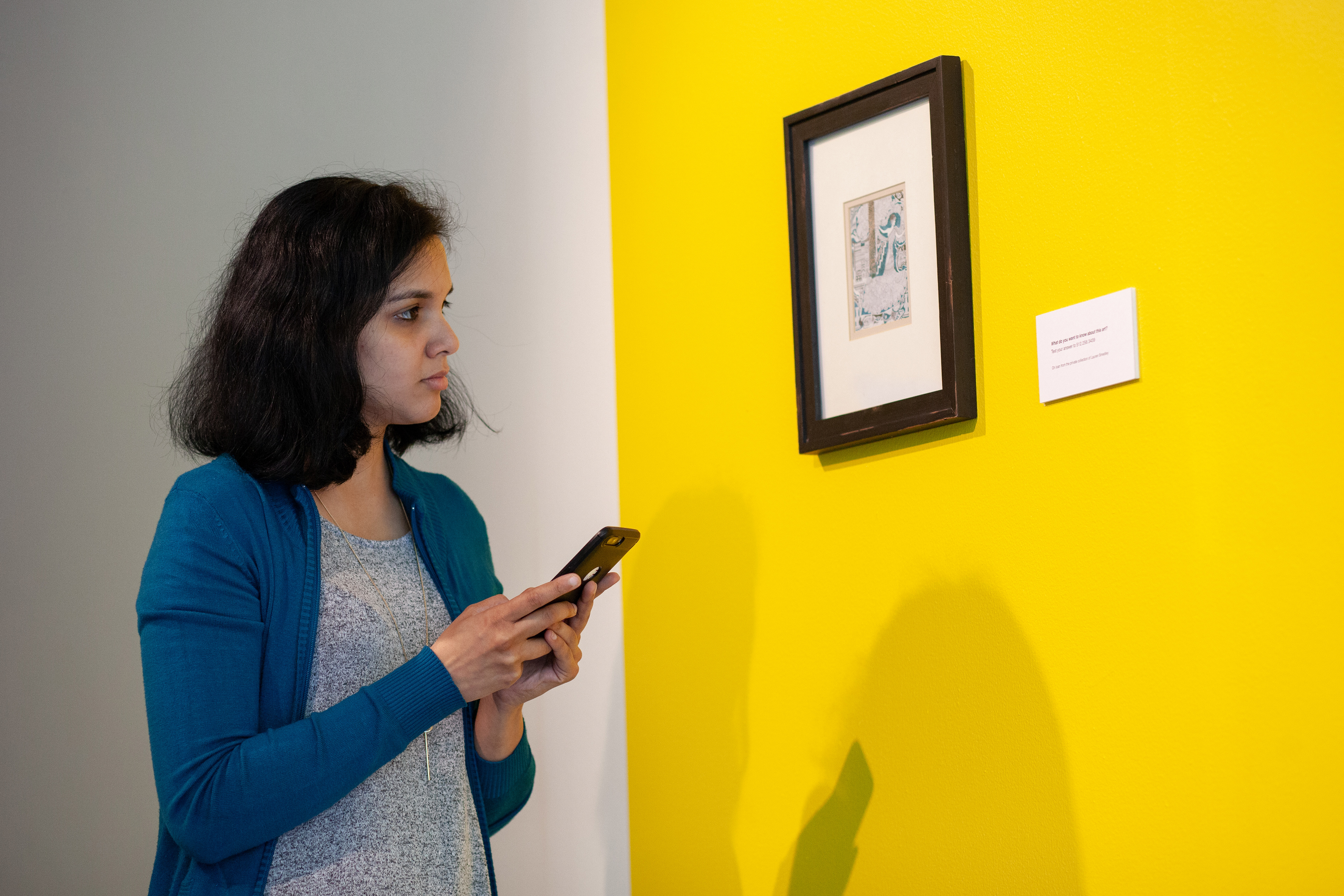
Visitor texting their response
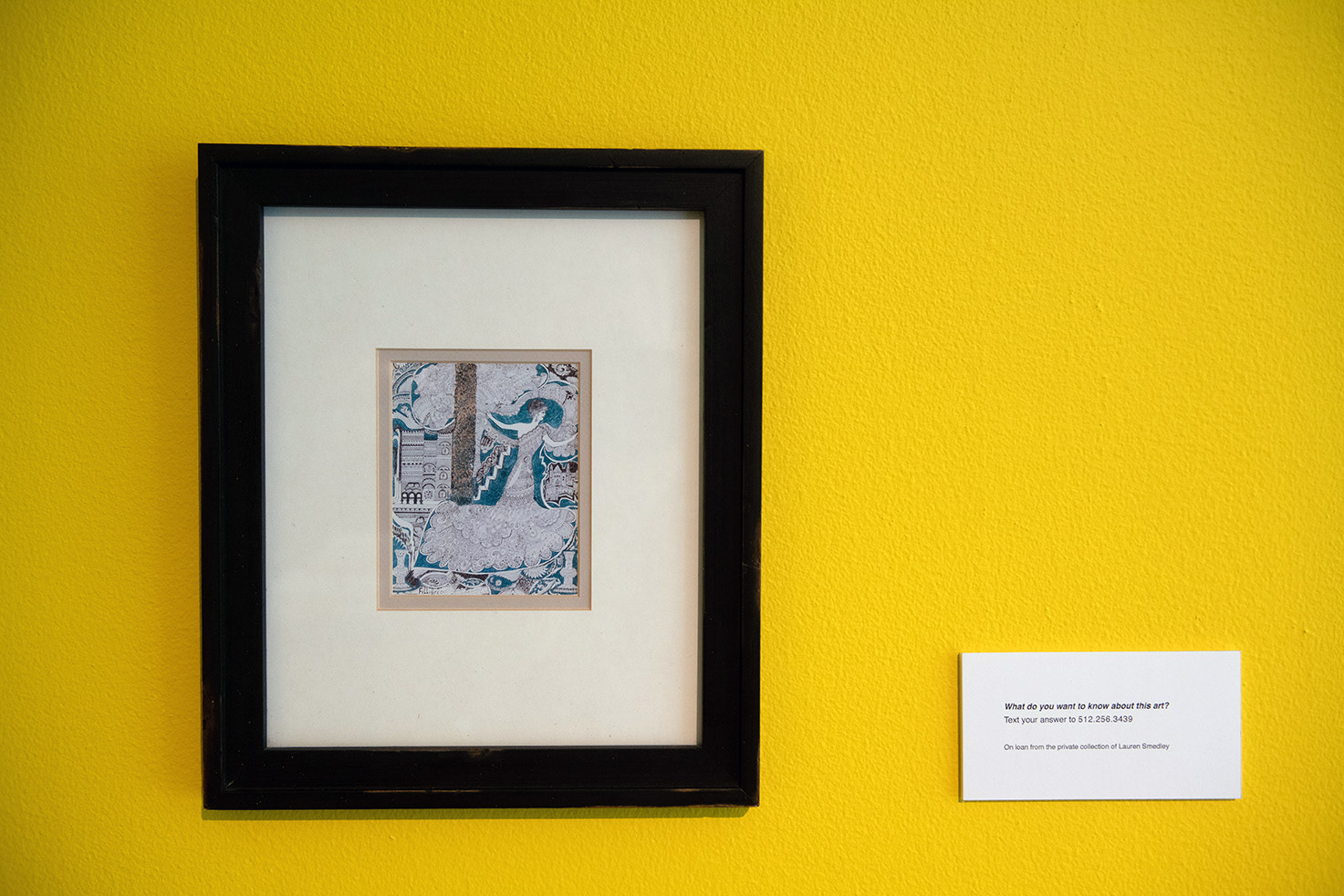
Closeup of the art and label

Screenshot of the texts I would receive
Result: In my research, I found that visitors provided feedback when they know their voice is being heard. This interactive allowed for a real response to a visitor's inquiry. For visitors who are hesitant to participate in a more social experience, this method allowed to interact with a piece of art anonymously. This was my second most popular interactive, the most popular interactive was the Feedback Loop #2.
Feedback Loop #2
This feedback loop asked visitors to "help complete the art." They could do so by answering a question on a piece of paper and then rolling the piece of paper and placing it into a sculpture. The questions the visitors could choose to answer were: What is one thing you found interesting or inspiring about this exhibit? What is one thing you found confusing about this exhibit? and What is one thing you will remember about this exhibit?
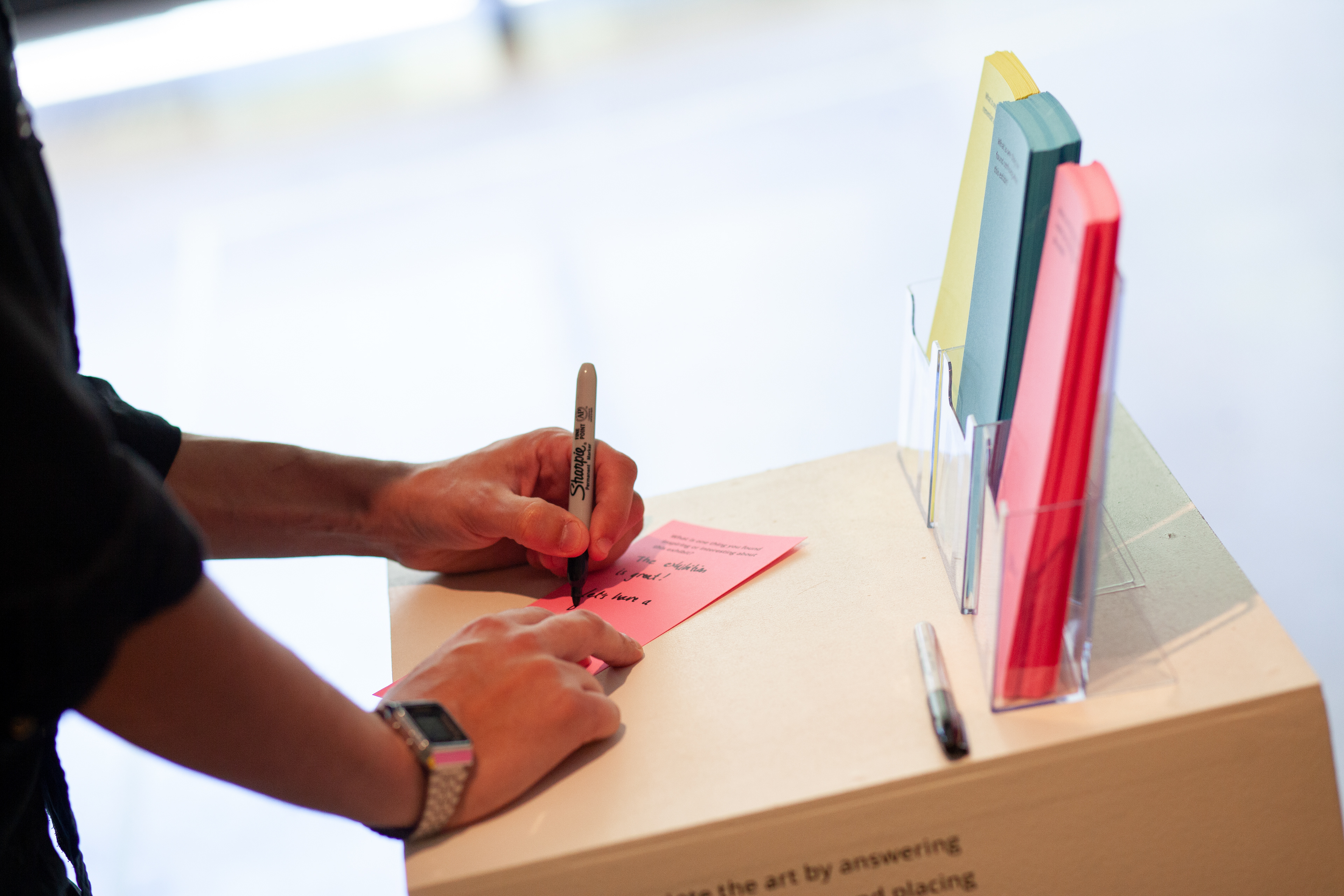
Visitor filling out one of the prompts.

Visitor inserting the prompt into the sculpture.

Feedback loop mid-way through opening.

Visitor contributing to the feedback loop

Sample of feedback forms.
Result: In total, I received 197 responses in the 10 days which the exhibit was open. The most popular response was What is one thing you will remember about this exhibit? with a 44% response rate. The second most popular was What is one thing you found interesting or inspiring about this exhibit? with a 40% response rate. Lastly What is one thing you found confusing about this exhibit? with a 16% response rate. This feedback loop was the most popular and had the most interaction, because it not only was the most visually appealing but it required the least level of commitment to interpreting the art.
Feedback Loop #3
The one with the least amount of interaction was the final feedback loop, a Google Document containing my Six Principles for Redesigning Museum Interpretation. I invited visitors to change, ask, and comment on the Six Principles, hoping that this would appeal to visitors who enjoyed interacting with other visitors’ thoughts and ideas.

Visitors interacting with Feedback Loop #3
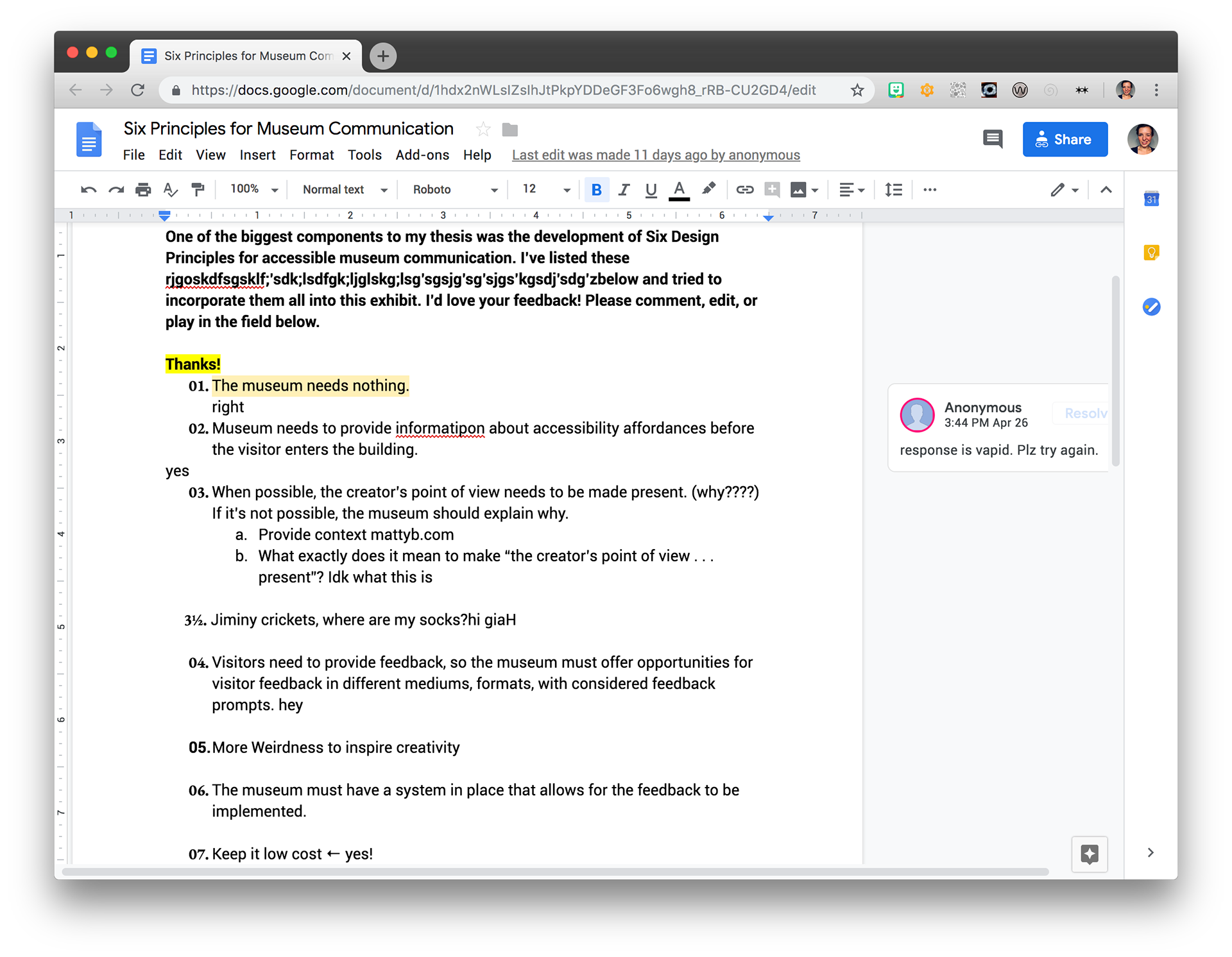
Screenshot of final document.

Screenshot of final document.
Result: This device ended up creating the most unhelpful responses. Instead of appealing to visitors who enjoyed engaging in a dialogue, it worked similar to a message board on a website, where users had the opportunity to say something out-of-place or uncouth because of the anonymity. However, no one did anything egregious such as delete the document (or delete other messages), open up a new website or close this one.